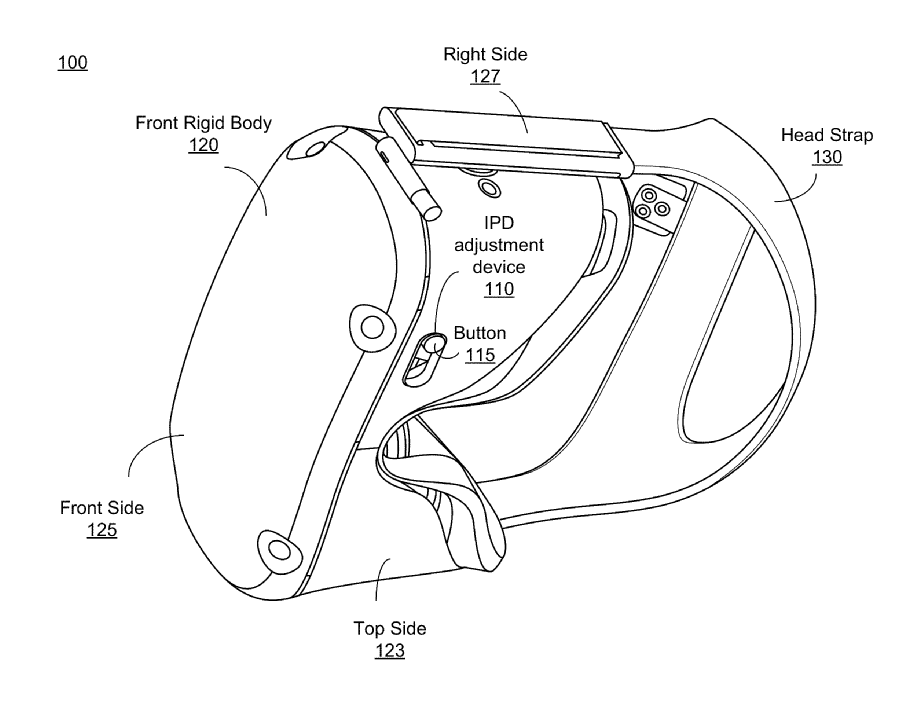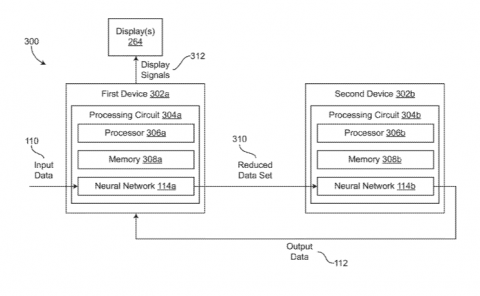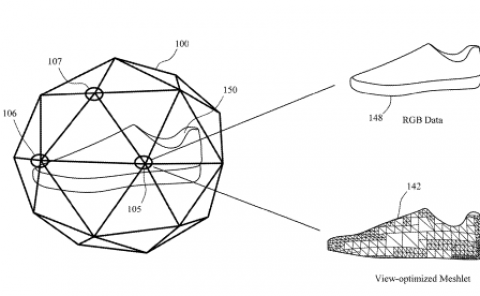Oculus | Interpupillary Distance Adjustment In A Head-mounted Display
Patent: Interpupillary Distance Adjustment In A Head-mounted Display
Publication Number: 20180338130
Publication Date: 2018-11-22
Applicants: Oculus VR, LLC

Abstract
A device is configured to adjust interpupillary distance in a HMD. The device include a fixed plate, a button assembly, a spring, and a gear. The spring biases the button assembly towards the fixed plate to prevent movement of the button assembly. A button of the button assembly can be pressed beyond a threshold distance to disengage the button assembly and the fixed plate. Consequently, the button assembly can be moved relative to the fixed plate. The gear meshes with a gear rack of the button assembly and is associated with two display assemblies of the HMD. The movement of the button assembly drives the gear to rotate. The rotation of the gear causes the two display assemblies of the HMD to move in opposite directions. The movement of one of the display assemblies relative to the other display assembly adjusts interpupillary distance in the HMD.
BACKGROUND
The present disclosure generally relates to head-mounted displays (HMD), and specifically to a device for adjusting interpupillary distance in HMD.
People have different interpupillary distances (IPD). For comfortable use, it is advantageous have a mechanism in a HMD to adjust interpupillary distance. Existing mechanism for adjusting the interpupillary distance in a HMD typically enable adjustment of interpupillary distance on a discrete basis. That is, a user may be allowed to select one of a plurality of discrete interpupillary distance settings. Such discrete interpupillary distance setting may not be sufficient to provide fine tuning and thereby degrade the user experience of HMD.
SUMMARY
Embodiments relate to a HMD with a mechanism for continuously adjusting of an interpupillary distance. The HMD includes two display assemblies that display images to the two eyes of a user of the HMD, respectively. Each display assembly has an exit pupil. The exit pupil is a virtual aperture in the display assembly and only image light passing through this virtual aperture can exit the display assembly and enter into the eye of the user. Interpupillary distance in the HMD is the distance between the two exit pupils. The IPD adjustment device adjusts interpupillary distance in the HMD through driving motions of the two display assemblies.
In some embodiments, the IPD adjustment device includes a fixed plate, a button assembly, a spring, and a gear. The fixed plate is formed with a slot and has a surface with teeth ("tooth surface"). The fixed plate is associated with a button assembly. The button assembly includes a button, a resilient layer, and a gear rack attached to the button. At least part of the button is received in the slot of the fixed plate. At least some of the part of the button that is not received in the slot is exposed to the user. The resilient layer of the button assembly has a surface facing the tooth surface of the fixed plate. The spring biases the button assembly towards the fixed plate and presses the resilient layer against the tooth surface of the fixed plate to prevent movement of the button assembly relative to the fixed plate. The gear meshes with the gear rack of the button assembly and associates with the display assemblies of the HMD.
The user may push the button beyond a threshold distance to disengage the tooth surface of the fixed plate from the resilient layer of the button assembly. After the tooth surface is disengaged from the resilient layer, the user may move the button along the slot of the fixed plate. Because the button is attached to the gear rack, the gear rack moves with the button. The moving gear rack rotates the gear that meshes with the gear rack. The rotation of the gear causes motions of the display assemblies, resulting in adjustment of the interpupillary distance in the HMD.



